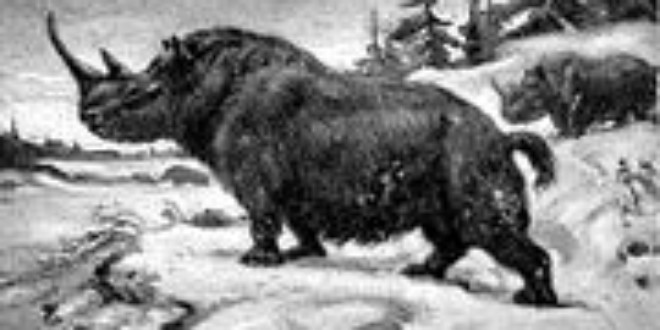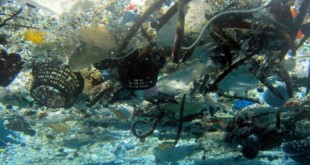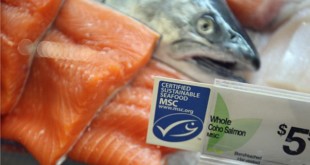There is a Biocentric Solution.
Commentary by Paul Watson
Founder and President of Sea Shepherd Conservation Society
Does humanity have a future?
We are presently living in what conservation biologists refer to as the Holocene extinction event. This is the sixth global mass extinction event in last 439 million years. The previous five extinction events wiped out between 50 to 95 percent of species each time. The most recent event was 65 million years ago at the end of the Jurassic period, a cataclysmic occurrence that exterminated the dinosaurs, the dominant group of species at of that period.
Evolution addresses the diminishment of biological diversity through speciation, but it takes at least ten million years to build up diversity of species to the level prior to a mass extinction event.
The world ten million years after the Jurassic crash was radically different than the world of the dinosaurs. The world after the Holocene extinction event, the one we are in now, will be as radically altered and most likely one of the species that will not survive the event will be the present dominant species – the human species.
In a way, the Holocenic extinction event could also be called the “Holocenic hominid collective suicide event.”
After all, we Homo sapiens are the last survivors of the hominid line, a group that has been on its way out for some time. The beetle family, for example, has some 700,000 species by comparison. Odds are many of the beetle species will survive the event, whereas we will not.
But the reality is that what is happening now is the result of the collective actions of us hominids. We are the ruthlessly territorial primates whose numbers have soared far beyond the level of global carrying capacity for the deadly behavioural characteristics that we display.
This did not happen yesterday because we suddenly became aware of the dangers of global warming. It began 50,000 years ago when a relatively hairless primate stumbled out of equatorial Africa and began wiping out the megafauna of the time. Wherever this creature (our ancestor) went, their arrival was followed by large die-outs of megafauna. Primitive hominids were well-organized, efficient, slaughter crews. As they advanced, the mammoth, sabre-toothed cats, cave bears, giant sloths, camels, horses, and wholly rhinos fell to their stone weapons and deliberately set fires. The extinction of all of these great mega-species is directly attributable to “primitive” human hunters. The hunting down of the mega-fauna was followed by the advent of agriculture and the domestication of selected animals. Domesticated cows, goats, sheep, and pigs grew in numbers and denuded large areas of grasslands. Irrigation systems began to toxify land. Then agriculture was followed by industrial activities, and finally, by the burning off of vast amounts of fossil fuels.
As an example, consider Australia. There were incredible creatures that once lived and foraged in the wilds of Australia more than 50,000 years ago. They vanished.
They were victims of widespread fires set by the first human inhabitants, the ancestors of modern day Aboriginals. The fires were set to burn the brush, either to assist in hunting or to clear the land. Whatever the reason, the fires were devastating and the result was a massive extinction of species, primarily the majority of the incredible mega-fauna of the continent.
The entire ecosystem of Australia some fifty millennium ago was disrupted and transformed by humans. The fires wiped out food sources for browsing animals like the 200-pound flightless bird called the Genyornis. Marsupials the size of grizzly bears were obliterated. Also destroyed were tortoises twice the size of those in the Galapagos today, and snakes and lizards in excess of twenty-five feet.
In all, some 85 percent of the mega-fauna was removed because of human intervention.
According to research by scientists at the University of Colorado, the Australian National University, and the University of Washington, the analysis of organic material in some 700 fossil eggshells laid over centuries by the enormous bird Genyornis newtoni revealed that the birds lived among an abundant array of vegetation that suddenly became very scarce. This scarcity coincides with the period of colonization of Australia by humans from Indonesia.
“It was systematic burning that caused the catastrophic collapse of the largest animals.” This according to Gifford Miller in an interview from the Australian National University in Canberra.
“The widespread fires altered the environment so drastically that what had been forest turned into a dry landscape of small scrubby shrubs and grasses, where smaller animals that could thrive on much more varied diets were able to survive while the megafauna vanished,” he said.
“It can happen anywhere at any time: Humans are a part of any ecosystem, so when you introduce people into the system, they’re bound to alter it – often so rapidly that other parts of the ecosystem don’t have any time to adjust. The result is extinction,” Miller said.
It has been a case of steady diminishment for thousands of years followed by a rapidly accelerating ecological downward spiral.
Today, escalating human populations have vastly exceeded global carrying capacity and now produce massive quantities of solid, liquid, and gaseous waste. Biological diversity is being threatened by over-exploitation, toxic pollution, agricultural mono-culture, invasive species, competition, habitat destruction, urban sprawl, oceanic acidification, ozone depletion, global warming, and climate change. It’s a runaway train of ecological calamities.
It’s a train that carries all the earth’s species as unwilling passengers with humans as the manically insane engineers unwilling to use the brake pedal.
The latest reports from the International Union for the Conservation of Nature’s Red List (IUCN) – a database measuring the global status of Earth’s 1.5 million scientifically named species – states quite confidently that we will lose half of them by 2150.
This is a cataclysmic prediction, yet it is strangely absent from the world’s media. No one wants to hear about it. It’s depressing. We would rather collectively deny ecological realities.
I’ve heard from some denialists that species extinction is natural. Yes it is, but the normal extinction rate over millions of years has been about one species per year and the niche vacated is readily filled by another species that begins to specialize in filling that niche.
But, we are now losing species faster than they can be replaced and entire ecological niches are being vacated permanently.
Of the 40,168 species that the 10,000 scientists in the IUCN assessed, one in four mammals, one in eight birds, one in three amphibians, one in three conifers, and other gymnosperms are at risk of extinction. The peril faced by other classes of organisms is less thoroughly analyzed, but fully 40 percent of the examined species of planet earth are in danger, including perhaps 51 percent of reptiles, 52 percent of insects, and 73 percent of flowering plants.
Extinction of marine wildlife is considered to be even more severe with only 4% of the Northern cod remaining and sharks being removed from the sea at a rate of one hundred million a year.
By the most conservative measure – based on the last century’s recorded extinctions – the current rate of extinction is 100 times the background rate. Harvard conservation biologist Edward O. Wilson estimates that the true rate is more like 1,000 to 10,000 times the background rate. We are losing about 200 species a day and remember that the norm is one species per year.
Wilson predicts that our present course will lead to the extinction of half of all plant and animal species by 2100.
The trends are all around us and in the process of rapid escalation. Of course, it is easy to dismiss this and go about our business which is the ignorance-is-bliss-school of thought.
But, would we do this if we were diagnosed with a terminal disease? No, as depressing as that revelation would be, we would address possible remedies. We would look for a cure. We would try to survive.
The planet’s ecosystem is a collective living organism and operates very much like the human body. Water is the blood of the earth. It provides the same function in the body as it does for the earth. Water transports nutrients to the land and transports waste to the sea or more specifically the estuaries and salt marshes that function as the liver for the earth, cleansing the water of the toxins. Water circulates through the ecosystem from the sea into the clouds falling back onto the land and returning to the sea again. It is pumped by the energy of the sun, the heart of the earth. It’s a continuous cyclic movement of nutrient bearing, waste removing action that keeps the land fertile.
A river is an artery and a vein, and streams and brooks are capillaries. Put a dam on a river and you cut off an artery preventing nutrients from moving downstream and you cut off the vein preventing the waste from the land from being removed and cleansed.
Plankton, plants, and especially forests are the lungs of the earth, removing carbon dioxide and producing oxygen. Overfishing, plankton harvesting, and deforestation is literally diminishing global lung capacity.
Species work interdependently to develop mutually beneficial strategies that maintain and strengthen ecosystems. Every species removed diminishes the system and weakens the collective body of the biosphere.
Humans are presently acting upon this body in the same manner as an invasive virus with the result that we are eroding the ecological immune system.
A virus kills its host and that is exactly what we are doing with our planet’s life support system. We are killing our host the planet Earth.
I was once severely criticized for describing human beings as being the “AIDS of the Earth.” I make no apologies for that statement. Our viral like behaviour can be terminal both to the present biosphere and ourselves. We are both the pathogen and the vector. But we also have the capability of being the anti-virus if only we can recognize the symptoms and address the disease with effective measures of control.
John Muir once wrote that when you tug on any part of nature, you find that it is intimately connected to every other part of nature.
The symptoms are right here before our eyes. Bee diminishment is causing diminishment in plants dependent upon bee pollination. Army ants support 100 known and identified species from beetles to birds. Grey whales are returning to Mexican lagoons under-nourished. Shark and large predatory fish populations have been reduced to between 65 to 95 percent in our oceans. Entire fish species are in a state of rapid collapse, especially the commercially valued species like cod, wild salmon, swordfish, and tuna.
Seventy species of South American frogs have been declared extinct in the last two decades. Thousands of species of insects are going extinct in the rainforests that have not even been discovered and classified.
I remember walking along the beaches in Vancouver harbour a few decades ago. Every single stone overturned sent a flurry of disturbed baby crabs scurrying to find new cover. I was fascinated by the sheer number of tiny crustaceans that I observed on those walks. Today, I have not found a single young crab under a single rock on those beaches. They were picked clean by Vietnamese immigrants that descended like locusts onto those beaches and stripped them clean. And criticism of that exploitation immediately elicited accusations of racism.
Today racism, cultural rights, and the right to exploit nature for commercial gain are the weapons used to defend gross over-exploitation of species and the destruction of natural habitats.
An extinction event is a quickly accelerating process. The number of species removed will rise relevant to the rising number of host species.
There is only one cure, only one way of stopping this rising epidemic of extinctions. The solution requires an extraordinarily immense effort by all of human society but it is achievable.
We need to re-wild the planet. We need to “get ourselves back to the garden” as Joni Mitchell once so poetically framed it.
This is a process that will require a complete overhaul of all of humanities economic, cultural, and life style systems. Within the context of our present anthropocentric mind-set the solution is impossible. It will require a complete transformation of all human realities.
But the alternative is unimaginable. Unless we address the problem, we will be faced with the complete transformation of the planet from one of diversity to ecosystems shattered, weakened, and destroyed by mass extinction and the collapse of bio-diversity.
One hundred and fifty years ago, Henry David Thoreau wrote that “in wildness is the preservation of the world.”
We should not be living in human communities that enclose tiny preserved ecosystems within them. Human communities should be maintained in small population enclaves within linked wilderness ecosystems. No human community should be larger than 20,000 people and separated from other communities by wilderness areas. Communication systems can link the communities.
In other words, people should be placed in parks within ecosystems instead of parks placed in human communities. We need vast areas of the planet where humans do not live at all and where other species are free to evolve without human interference.
We need to radically and intelligently reduce human populations to fewer than one billion. We need to eliminate nationalism and tribalism and become Earthlings. And as Earthlings, we need to recognize that all the other species that live on this planet are also fellow citizens and also Earthlings. This is a planet of incredible diversity of life-forms; it is not a planet of one species as many of us believe.
We need to stop burning fossil fuels and utilize only wind, water, and solar power with all generation of power coming from individual or small community units like windmills, waterwheels, and solar panels.
Sea transportation should be by sail. The big clippers were the finest ships ever built and sufficient to our needs. Air transportation should be by solar powered blimps when air transportation is necessary.
All consumption should be local. No food products need to be transported over hundreds of miles to market. All commercial fishing should be abolished. If local communities need to fish the fish should be caught individually by hand.
Preferably vegan and vegetarian diets can be adopted. We need to eliminate herds of ungulates like cows and sheep and replace them with wild ungulates like bison and caribou and allow those species to fulfill the proper roles in nature. We need to restore the prey predator relationship and bring back the wolf and the bear. We need the large predators and ungulates, not as food, but as custodians of the land that absorbs the carbon dioxide and produces the oxygen. We need to live with them in mutual respect.
We need to remove and destroy all fences and barriers that bar wildlife from moving freely across the land. We need to lower populations of domestic housecats and dogs. Already the world’s housecats consume more fish than all the world’s seals and we have made the cow into the largest aquatic predator on the planet because more than one half of all fish taken from the sea is converted into meal for animal feed.
We need to stop flying, stop driving cars, and jetting around on marine recreational vehicles. The Mennonites survive without cars and so can the rest of us.
We can retain technology but within the context of Henry David Thoreau’s simple message to “simplify, simplify, simplify.”
We need an economic system that provides all people with educational, medical, security, and support systems without mass production and vast utilization of resources. This will only work within the context of a much smaller global population.
Who should have children? Those who are responsible and completely dedicated to the responsibility which is actually a very small percentage of humans. Being a parent should be a career. Whereas some people are engineers, musicians, or lawyers, others with the desire and the skills can be fathers and mothers. Schools can be eliminated if the professional parent is also the educator of the child.
This approach to parenting is radical but it is preferable to a system where everyone is expected to have children in order to keep the population of consumers up to keep the wheels of production moving. An economic and political system dependent on continuous growth cannot survive the ecological law of finite resources.
There is, of course, a complexity of problems in adjusting to a new design that will simply allow us to survive the consequences of our past ecological folly.
Curing a body of cancer requires radical and invasive therapy, and therefore, curing the biosphere of the human virus will also require a radical and invasive approach
It won’t be easy but then it’s better than the alternative.
 Ocean Sentry
Ocean Sentry




